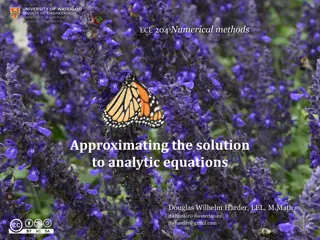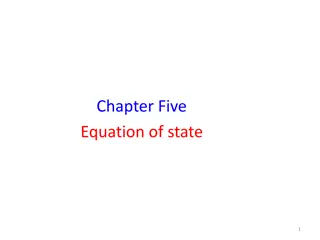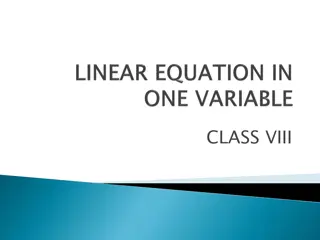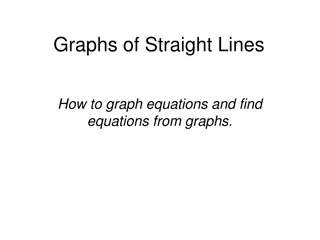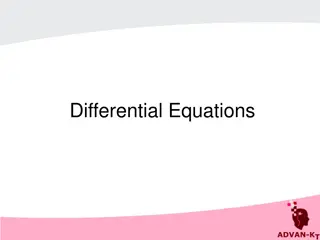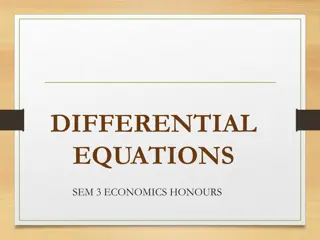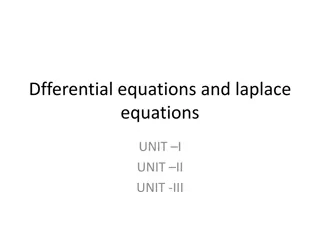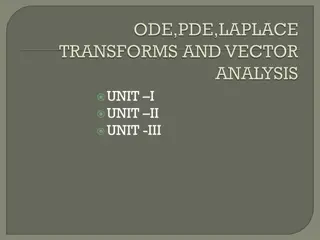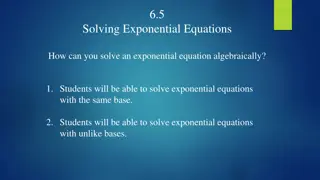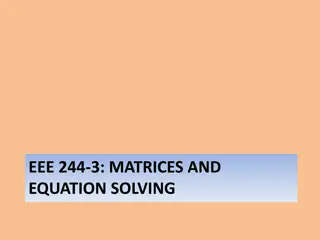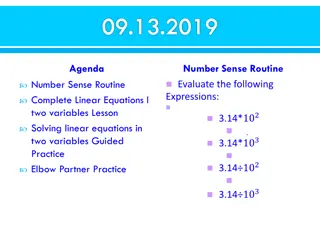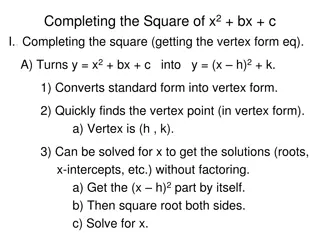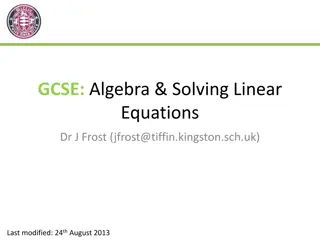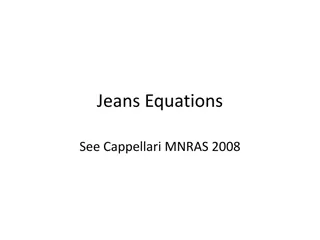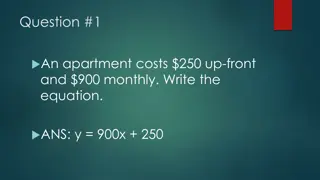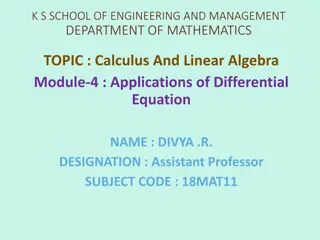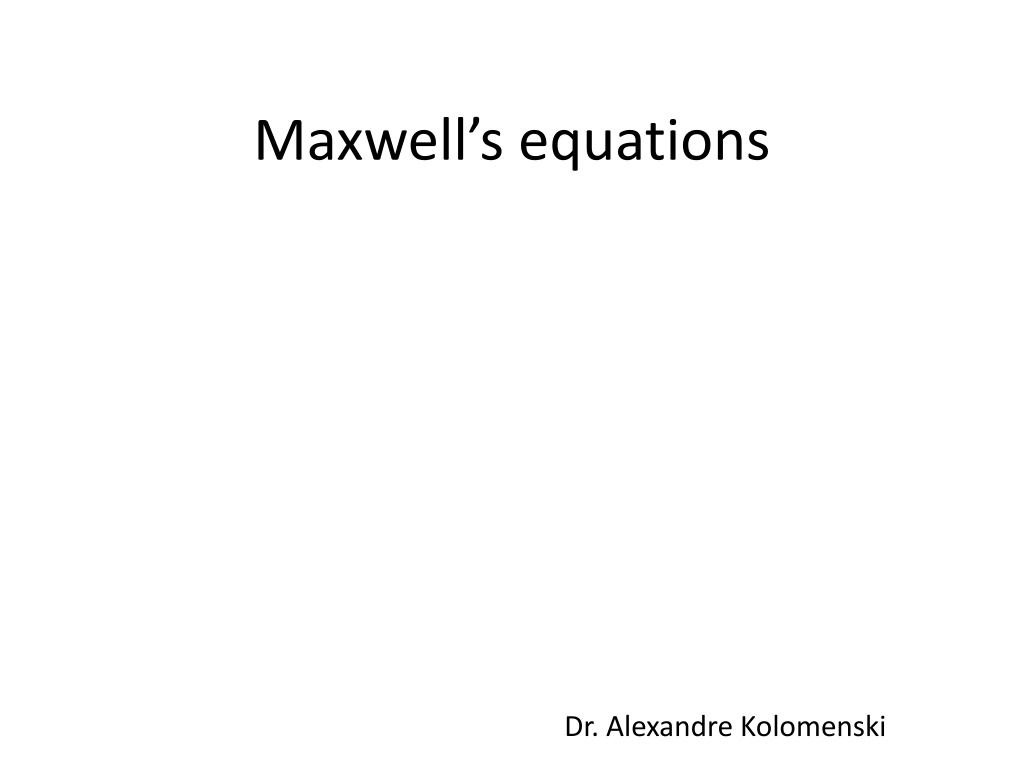
Understanding Maxwell's Equations and Their Significance
Explore the powerful Maxwell's equations formulated by Scottish physicist Maxwell in 1861, integral and differential forms, relationship with the speed of light, key operators involved, transition from integral to differential form, and more on electric and magnetic fields. Unravel the foundational principles governing electromagnetism elegantly described by Maxwell.
Download Presentation

Please find below an Image/Link to download the presentation.
The content on the website is provided AS IS for your information and personal use only. It may not be sold, licensed, or shared on other websites without obtaining consent from the author. Download presentation by click this link. If you encounter any issues during the download, it is possible that the publisher has removed the file from their server.
E N D
Presentation Transcript
Maxwells equations Dr. Alexandre Kolomenski
Maxwell (13 June 1831 5 November 1879) was a Scottishphysicist. Famous equations published in 1861
Maxwells equations: integral form \oiint Gauss's law \oiint Gauss's law for magnetism: no magnetic monopole! Amp re's law (with Maxwell's addition) Faraday's law of induction (Maxwell Faraday equation)
Relation of the speed of light and electric and magnetic vacuum constants permittivity of free space, also called the electric constant As/Vm or F/m (farad per meter) 0 permeability of free space, also called the magnetic constant Vs/Am or H/m (henry per meter) 0
Differential operators A y A x A z y x z = + + A the divergence operator div x y z Other notation used the curl operator curl, rot = A x y z = x x A A A x y z the partial derivative with respect to time t
Transition from integral to differential form Gauss theorem for a vector field F(r) Volume V, surrounded by surface S \oiint Stokes' theorem for a vector field F(r) Surface , surrounded by contour
Maxwells equations: integral form \oiint Gauss's law \oiint Gauss's law for magnetism: no magnetic monopoles! Amp re's law (with Maxwell's addition) Maxwell Faraday equation (Faraday's law of induction)
Maxwells equations (SI units) differential form density of charges j density of current
Electric and magnetic fields and units E electric field, volt per meter, V/m the magnetic field or magnetic induction B tesla, T electric displacement field coulombs per square meter, C/m^2 D H magnetic field ampere per meter, A/m
Constitutive relations These equations specify the response of bound charge and current to the applied fields and are called constitutive relations. P is the polarization field, M is the magnetization field, then where is the permittivity and the permeability of the material.
Wave equation 0 2 2 = = ( ) ( ) B B B B 2 1 c B 2 = 0 B 2 2 t 2 1 c 1 c B = = = ( ) ( ) ( ) E E B 2 2 2 t t t t t 2 1 c E Double vector product rule is used a x b x c = (a c) b - (a b) c 2 = 0 E 2 2 t
), 2 more differential operators 2 2 2 A A x A z 2 y 2 x z = + + A Laplace operator or Laplacian or 2 2 2 y d'Alembert operator or d'Alembertian =
Plane waves = Thus, we seek the solutions of the form: [ ( )] B B Exp i k r t 0 = [ ( )] E E Exp i k r t 0 E B From Maxwell s equations one can see that k = E = is parallel to B i k B E i k E is parallel to B
Energy transfer and Pointing vector Differential form of Pointing theorem u is the density of electromagnetic energy of the field S is directed along the propagation direction || E H k Integral form of Pointing theorem \oiint
Energy quantities continued = [ ( )] B B exp i k r t max = max/ E max B c = [ ( )] E E exp i k r t max Observable are real values: = + maxcos[ ( )] B B i k r t = maxcos[ ( )] E E i k r t 2 2 = = = = /2 /2 I S E c cB cu max 0 max 0 av av 2 2 2 = + /(4 ) /4 u E c max B max 0 0 av


